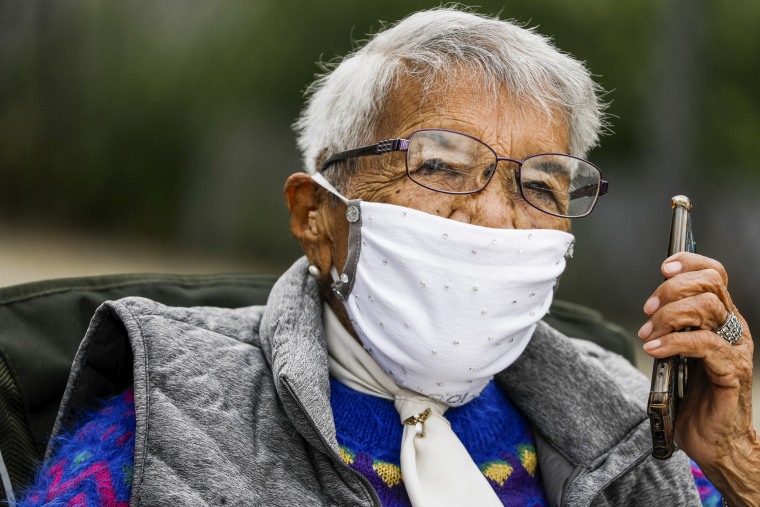Despite facing language barriers and discrimination, thousands of Latinas fulfilled an integral role in support of the U.S. military effort during World War II.
“They gave me an apron, I put the apron on, and then they told me, ‘You have to go get the gun’” Mary Fierros, a former Latina “Rosie” who is 102 years old, told Noticias Telemundo Los Angeles. (The story was also published in English for NBC Los Angeles.)
“I told them I’d never touched a gun, and they told me, ‘That’s a riveter machine, Mary!’” she said. “I didn’t know the difference.”
During World War II, the U.S. government launched a campaign encouraging women to aid the war effort by taking jobs traditionally filled by men. The program became widely known thanks to “Rosie the Riveter,” an iconic female factory worker featured on various propaganda posters. Hence, the women became known as Rosies.
Fierros, who lives in San Jose, California, spoke about her experience working for the Douglas Aircraft company.
While being designated as a riveter, Fierros and her partner, a bucker, helped place rivets on airplane wings but were instructed not to communicate with colleagues as they worked on the military mission.
“My partner, I never knew her name, because I couldn't ask her what country she was from," Fierros said. "I knew she couldn't speak English, because when she needed something she had to talk to me so I could translate what she was saying.”
At the time, women living in Mexico could also work in the program. Francisca Miranda, who lived across the border in Tijuana, was able to enter the U.S. workforce with special permission.
“When you’re 18 years old, they accepted the paper you filled out and everything,” Miranda recalled in an interview with the station. “It was very different when one didn’t know English, and different when one enters the workforce without knowing the language,” she said.

Fierros and Miranda were among thousands of women who replaced male workers in factories and shipyards as the men were fighting the war. Their experiences have been preserved at the Rosie the Riveter WWII Home Front National Park located in Richmond, California.
“My mom doesn’t recognize the importance of women during the war," Alice Ann Virchis, Miranda’s daughter, said. “In all of those factories, all around the country, there were Mexican women working."
While Latina Rosies made significant advancements for progress in human rights and race relations, they also faced discrimination and segregation in the workplace after others learned of their ethnicity.
Despite facing prejudice and racism, the role of Latina Rosies is preserved in history.
“What women did during that era was unforgettable, because who was going to make the planes? Who was going to make the jeeps, or the tanks?” Virchis told the station.
Follow NBC Latino on Facebook, Twitter and Instagram.

